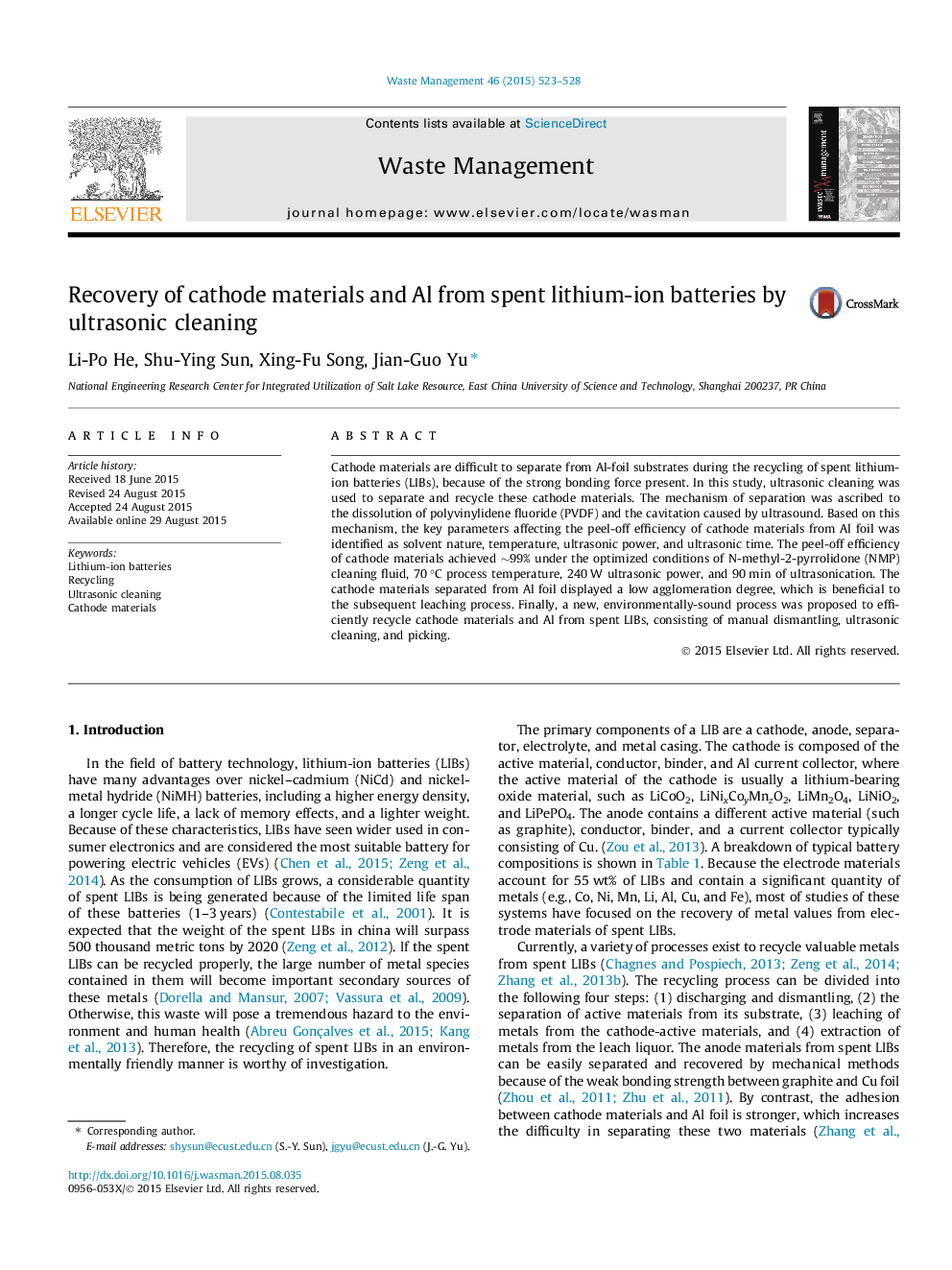| Article ID | Journal | Published Year | Pages | File Type |
|---|---|---|---|---|
| 6354541 | Waste Management | 2015 | 6 Pages |
â¢Ultrasonic cleaning was used to separate cathode materials and Al foil.â¢The peel-off efficiency of cathode materials achieved nearly 99%.â¢Not only all cathode materials were recycled, but Al was recycled in metallic form.â¢A simple and efficient process for recycling of spent LIBs was proposed.
Cathode materials are difficult to separate from Al-foil substrates during the recycling of spent lithium-ion batteries (LIBs), because of the strong bonding force present. In this study, ultrasonic cleaning was used to separate and recycle these cathode materials. The mechanism of separation was ascribed to the dissolution of polyvinylidene fluoride (PVDF) and the cavitation caused by ultrasound. Based on this mechanism, the key parameters affecting the peel-off efficiency of cathode materials from Al foil was identified as solvent nature, temperature, ultrasonic power, and ultrasonic time. The peel-off efficiency of cathode materials achieved â¼99% under the optimized conditions of N-methyl-2-pyrrolidone (NMP) cleaning fluid, 70 °C process temperature, 240 W ultrasonic power, and 90 min of ultrasonication. The cathode materials separated from Al foil displayed a low agglomeration degree, which is beneficial to the subsequent leaching process. Finally, a new, environmentally-sound process was proposed to efficiently recycle cathode materials and Al from spent LIBs, consisting of manual dismantling, ultrasonic cleaning, and picking.
Graphical abstractDownload high-res image (198KB)Download full-size image
